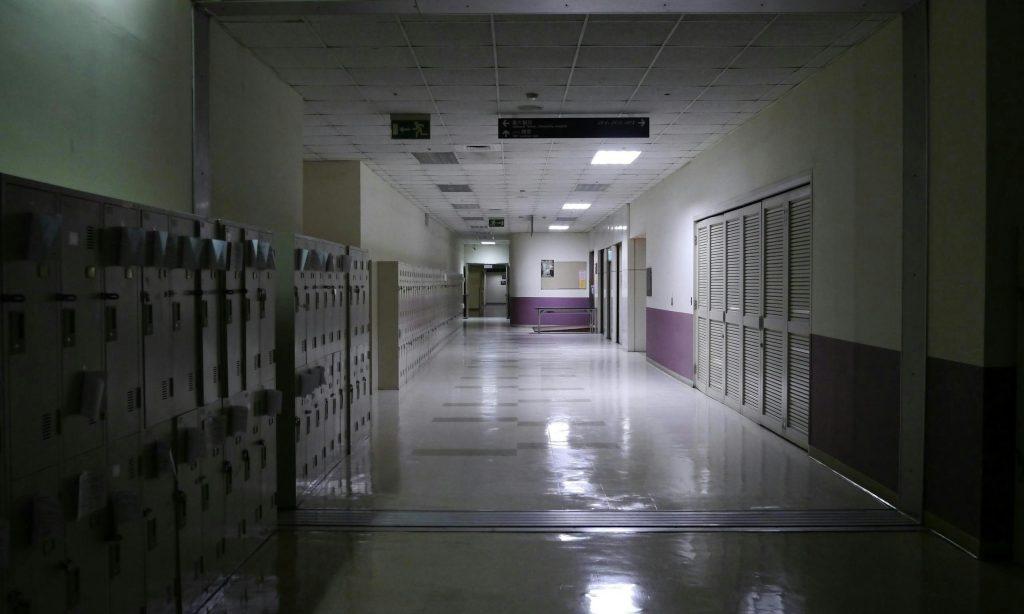Translated and adapted with permission from The News Lens (關鍵評論網) three-part series “醫師節不快樂” by Julia (朱莉雅).

On Taiwan’s Doctors’ Day (celebrated on November 12th), hospitals hand out flowers and certificates. But the people meant to be celebrated are exhausted, leaving key specialties, and in some cases paying penalties just to get out.
A three-part investigative series from The News Lens (關鍵評論網) follows surgeons, pediatric emergency doctors, and a psychiatrist-researcher to show how Taiwan’s medical system runs on ultra-long shifts, legal gray zones, and a public-service doctor scheme that often fails to keep talent where it is most needed. (TNL The News Lens 關鍵評論網)
The headline problem is summed up by a phrase that now appears regularly in Taiwanese media: “五大皆空” — the “five major specialties all going empty.”
The “Big Five” Are No Longer the First Choice
For decades, the top graduates of Taiwan’s medical schools aimed for the heavy-duty “big five”: internal medicine, surgery, obstetrics and gynecology, pediatrics, and emergency medicine.
Thoracic surgeon Du Cheng-zhe (杜承哲), who works at a regional teaching hospital, remembers that era well. Thirty years ago, he says, the best students usually chose internal medicine or surgery. Today, dermatology, ophthalmology, rehabilitation medicine, plastic surgery, and other “lighter” specialties often recruit the top of the class instead. (TNL The News Lens 關鍵評論網)
The reasons are blunt:
- Big-five specialties mean long hours, high stress, and frequent overnight calls.
- Pay and long-term career prospects in hospitals are often worse than in lifestyle specialties or self-pay clinics.
- Fear of lawsuits in high-risk fields like surgery further pushes young doctors away.
As Taiwan’s birth rate falls, the workload and incomes for ob-gyn and pediatrics shrink. Du notes that when everyone else becomes an attending physician and earns comfortably, the doctor who stayed in a shrinking specialty but earns “under 100,000” NT dollars a month will inevitably question their choice. (TNL The News Lens 關鍵評論網)
That choice is already reshaping the system: Major hospitals report serious shortages in pediatric departments; some cannot fill half of their resident positions. (TNL The News Lens 關鍵評論網) Pediatric specialists are leaving or avoiding emergency work.
Hospitals under pressure have quietly begun “abandoning” 24-hour pediatric emergency services, simply because they cannot staff them around the clock. (TNL The News Lens 關鍵評論網). The result is a slow hollowing-out of the specialties that handle births, children, acute internal crises, and life-or-death emergencies — precisely the areas a modern health system cannot afford to lose.
“33.5 Hours Straight”: How Ultra-Long Shifts Are Made
Psychiatrist Lin Yu-hsuan (林煜軒), now an attending doctor at National Taiwan University Hospital’s Department of Psychiatry (台大醫院精神醫學部) and an associate research physician at the National Health Research Institutes’ Institute of Population Health Sciences (國家衛生研究院群體健康科學研究所), has spent nearly two decades studying overwork among healthcare workers — starting from his own days as an intern. (TNL The News Lens 關鍵評論網)
First, he lays out how doctors are trained in Taiwan:
- Six years of medical school.
- National Physician Examination and licensure — at this point, you are legally a “doctor.”
- Two years of post-graduate (PGY, 一般醫學) training as a “non-specialized resident” (不分科住院醫師).
- Specialty training in one of 24 Ministry of Health and Welfare (衛福部) specialties; after certification, you become an attending physician (主治醫師) in a hospital or clinic. (TNL The News Lens 關鍵評論網)
Because inpatients need care 24 hours a day, hospitals require on-call duty. But “on call” in medicine is not like other shift work.
Lin gives a typical example:
- Regular hours: 8 a.m. to 5 p.m.
- On-call Monday: from 5 p.m. Monday to 8 a.m. Tuesday, the doctor remains on duty.
- After that, the same doctor still works a full 8 a.m.–5 p.m. Tuesday shift.
- One “shift” can thus stretch to 33.5 hours of continuous work from the beginning of Day 1’s morning shift to the end of Day 2’s afternoon. (TNL The News Lens 關鍵評論網)
In some wards, three or four residents share 30 nights of duty a month. When Lin was training, that meant each resident was on call about 10 times a month, which works out to roughly 86.7 hours a week. (TNL The News Lens 關鍵評論網)
In 2017, the Ministry of Health and Welfare issued the “Guidelines for Safeguarding the Labor Rights and Working Hours of Resident Physicians” (住院醫師勞動權益保障及工作時間指引), formally bringing residents under the Labor Standards Act (勞基法).
The rules limit: (TNL The News Lens 關鍵評論網)
- A single shift to 13 hours for shift-based residents.
- Continuous duty to 28 hours, including overtime.
- Total hours to 320 per four-week period.
However, these protections do not apply to attending physicians, who remain outside clear legal limits. And even for residents, real-world practice doesn’t always match the rulebook.
Recent data that Lin cites show Taiwanese doctors still work about 60 hours a week on average when on-call duty is included — 20 hours more than the 40-hour weekly ceiling for ordinary workers under the Labor Standards Act. (TNL The News Lens 關鍵評論網)
What Ultra-Long Shifts Do to Body and Mind
To move beyond anecdote, Lin turned his own training years into a research project. Starting around 2007, after graduating from Chang Gung University’s School of Medicine (長庚醫學系) and beginning his internship at Chang Gung Memorial Hospital, he and his colleagues used physiological monitoring and later a mobile app to track what ultra-long shifts do to doctors. (TNL The News Lens 關鍵評論網)
Key findings from his team’s work include:
- Anxiety and depression spike after on-call nights.
- Attention deteriorates and impulsivity rises, consistent with severe sleep debt.
- Objective measures of autonomic nervous system function, such as heart rate variability, fall over the months of internship — a warning sign for cardiovascular and mental health.
- After months of heavy hours, interns’ protective parasympathetic function drops, while depressive symptoms climb significantly. (TNL The News Lens 關鍵評論網)
Sleep quality is sometimes measured using cardiopulmonary coupling analysis, which looks at how stable breathing and heart rate are during sleep. For healthy adults, “stable sleep” typically makes up around 45 percent of sleep time. For patients with major depression and insomnia, it is roughly 32.5 percent. For heart-failure patients, about 24 percent.
Among interns on call, Lin’s research found stable sleep accounted for just 15.1 percent of their sleep, far worse than even many heart-failure patients. Even on non-call nights, their stable sleep share — 24.2–28.1 percent — was closer to heart-failure patients than to healthy peers. (TNL The News Lens 關鍵評論網)
Doctors also described a now-famous symptom: “phantom phone vibrations” and “phantom ringing.” During on-call periods, interns were far more likely to feel or hear their phones buzzing when nothing had happened.
Using vibration mode only made things worse. These hallucinated alerts correlate strongly with professional burnout — not as a mental illness, Lin emphasizes, but as a sign of intense chronic stress. (TNL The News Lens 關鍵評論網)
International research backs these concerns. A 2005 Journal of the American Medical Association (JAMA) study found that after four weeks of heavy call rotations, residents’ driving and vigilance performance was as impaired as if their blood alcohol concentration were 0.04–0.05 percent — around the legal limit for drunk driving in many countries. (JAMA Network)
In simple terms: a resident finishing a string of overnight calls may be functioning like a drowsy drunk driver — and then is expected to manage critically ill patients.
Yet, as Lin notes, it remains extremely difficult to quantify how much overwork directly contributes to medical errors because most countries, including Taiwan, do not maintain public datasets that match individual doctors’ working hours with specific patient outcomes. (TNL The News Lens 關鍵評論網)
Pediatric Emergency on the Edge
If the surgeon’s story is about who enters a specialty, pediatric emergency medicine shows what happens when too few stay.
Pediatric emergency doctor Wu Chang-teng (吳昌騰) has worked in both pediatric departments and emergency rooms. He explains that pediatric emergency work is different from standard outpatient or ward care:
- Pediatric emergency doctors handle sudden, severe illnesses and injuries.
- They must work a mix of daytime and overnight emergency shifts.
- The legal system expects 24-hour pediatric emergency coverage at children’s hospitals. (TNL The News Lens 關鍵評論網)
But in practice, Wu says, recruitment of pediatric residents is already difficult. For pediatric emergency doctors specifically, the challenge is worse:
Pediatric emergency doctors are drawn from the already-shrinking pool of pediatricians.
In his hospital, resident positions in pediatrics routinely go unfilled, while pediatric emergency doctors see high turnover. (TNL The News Lens 關鍵評論網)
He describes how young attendings often leave for clinics or for specialties that promise fewer night shifts and more predictable schedules. Wu has watched colleagues resign, even as hospitals struggle to maintain rosters that can staff child emergency rooms around the clock.
Despite the pressure, Wu chooses to stay. He recalls training at Mackay Memorial Hospital (馬偕醫院), where mentors with strong skills and heavy caseloads inspired him to remain in pediatrics and emergency care.
At the pediatric emergency department, he says, anxious parents often arrive in the middle of the night with sick children, then leave in tears of relief and gratitude when the child stabilizes or is safely admitted. That sense of purpose — immediately helping a child in crisis — keeps him going. But he is plainly worried:
Children’s hospitals are legally required to provide 24-hour pediatric emergency care, but staff shortages make this “very hard to sustain.”
Even some large medical centers are now quietly “giving up” specialized pediatric emergency departments because they cannot meet the 24-hour rule with pediatric specialists.
In the end, Wu fears, adult emergency doctors may be left to handle most children’s emergencies — an outcome he believes would be bad for pediatric care and child health. (TNL The News Lens 關鍵評論網)
Wu argues that the government must face this reality and provide concrete guarantees for pediatric emergency doctors — whether in the form of better pay, benefits, or dedicated staffing policies — before the system erodes any further.
Public-Service Doctors: A Solution That Isn’t Working
If the big five are emptying out and overwork is rampant, can the government simply train more doctors and send them where they’re needed?
That was the idea behind Taiwan’s public-service physician (公費醫師) programs.
According to Yen Hung-shun (顏鴻順), vice president of the Taiwan Medical Association (中華民國醫師公會全國聯合會副理事長), the government launched:
- A first phase (2016–2020, officially 105–109年) training 500 public-service doctors, and
- A second phase (2021–2025, 110–114年) will train 750 more. (TNL The News Lens 關鍵評論網)
The objectives were clear:
- Fill manpower gaps in the big five specialties.
- Address shortages in rural and remote areas.
In practice, Yen says, the outcomes have been disappointing:
Despite these cohorts, rural hospitals and key specialties still lack sufficient doctors.
Some public-service doctors have chosen to pay back their training costs out of pocket rather than stay in under-resourced posts with poor long-term prospects. (TNL The News Lens 關鍵評論網)
Yen argues that the core flaw is treating the program like a temporary bond rather than building an ecosystem where doctors actually want to stay. Short-term contracts may “tie” young doctors to a location, but if salaries, working conditions, and family life are unattractive, they will leave at the first opportunity.
He points to Japan as a contrasting example: when rural regions face doctor shortages, authorities there have boosted rural pay and offered housing and transportation subsidies. As a result, doctors see a real incentive to work in these areas instead of viewing them purely as a burden. (TNL The News Lens 關鍵評論網)
A separate survey of doctors via the A-Pen (A-Pen 醫師社群APP) platform — an anonymous “hospital friendliness” survey — found that average working hours for residents in Taiwan lie between 60 and 80 hours per week, and that the two biggest factors driving low satisfaction and high turnover are: (TNL The News Lens 關鍵評論網)
Salary and benefits, and human-resource allocation (i.e., how many people share the workload).
In other words, it is not simply “too few doctors” but too many in some fields and too few in others, often under the wrong incentives.
Not Just “Too Few Doctors” — The Core Problem Is Maldistribution
Both Lin and Yen caution against framing the crisis as a simple headcount issue.
Yes, some specialties and rural regions lack manpower. But national statistics show that:
The total number of clinics in Taiwan has been steadily rising — around 11,000 clinics nationwide, of which about 10 percent are self-pay clinics such as cosmetic, weight-management, anti-aging, or high-end health check centers. (TNL The News Lens 關鍵評論網)
Each year, roughly 1,300 medical graduates enter the workforce, and around 500 head straight into primary care at clinics. Some open their own practices; others join existing clinics. (TNL The News Lens 關鍵評論網)
As preventive medicine and outpatient treatment options improve, more conditions can be managed without hospitalization. That naturally raises demand for clinic-based care. So the shift of some doctors toward clinics is inevitable and even reasonable.
The question is how to rebalance the system so that:
- Essential hospital specialties — internal medicine, surgery, ob-gyn, pediatrics, emergency — remain staffed.
- Rural and smaller hospitals are not permanently understaffed, while urban centers and popular specialties are oversubscribed.
- Overwork is reduced not only by “adding more bodies” but by sharing duties more fairly, including asking senior doctors to participate in on-call rosters when appropriate. (TNL The News Lens 關鍵評論網)
Lin suggests that society needs to choose between two broad strategies:
A more market-driven approach, raising pay and on-call fees in unpopular specialties or regions to attract volunteers; or a more egalitarian approach, where everyone is expected to share the unpleasant duties more evenly, potentially backed by regulation.
He notes that he has already seen examples of the first model: one neurology attending told him he now “likes” being on call because his hospital decided to pay attendings substantially higher on-call fees than residents. Once the incentive became real, more senior doctors were willing to take night shifts, making the burden on younger colleagues lighter. (TNL The News Lens 關鍵評論網)
But under Taiwan’s National Health Insurance (全民健保) global budget, hospitals face tight financial constraints. Without system-level adjustments to reimbursement and funding, individual institutions have limited room to increase pay or staffing on their own.
Mapping Overwork: The “Work-Hours Recorder”
One of Lin’s most concrete contributions is a mobile app: the Work-Hours Recorder (工時記錄器). Instead of relying on self-reported timesheets, the app uses GPS to record how long a doctor or nurse remains in the hospital, producing an automatic log of working hours.
Studies using the app show that healthcare workers routinely underestimate their own working hours by about 10 percent, and the longer they work, the larger the gap between memory and reality. (TNL The News Lens 關鍵評論網)
Because on-call schedules and duty patterns are complex, it is nearly impossible for outside labor inspectors to track them week by week.
Lin argues that if 70–80 percent of staff in each hospital used such tools, and their data were anonymized and aggregated, Taiwan could construct a “heat map” of overwork — a reliable picture of where hours are most extreme and which specialties or hospitals are at greatest risk.
Only with that baseline, he says, can policymakers evaluate whether reforms — from work-hour limits to funding changes — are actually making things better.
What Would It Take to Make Doctors’ Day a Happy Day?
Across interviews, certain themes repeat:
- Extend real legal protections to all doctors, not only residents. Enforcing the Labor Standards Act or equivalent standards for attending physicians would send a clear message that ultra-long shifts are not an acceptable norm. (TNL The News Lens 關鍵評論網)
- Fix maldistribution, not just headcount. Incentives — financial and otherwise — must make it genuinely attractive to work in the big five specialties, in pediatric emergency, and in underserved regions.
- Rebuild the public-service doctor system so it provides long-term support and career paths, rather than short bonds that doctors try to escape.
- Adjust National Health Insurance reimbursements in ways that reward essential but currently undervalued work, such as pediatric emergency coverage and high-risk surgery.
- Invest in data and transparency, using tools like the Work-Hours Recorder to monitor real work hours and hold institutions accountable.
For now, many doctors still stay out of a sense of duty — like Wu Chang-teng in the pediatric emergency room, or Du Cheng-zhe in thoracic surgery. But they are clear: without systemic change, dedication alone cannot keep the system standing.
Doctors’ Day will remain an uncomfortable celebration until the people on the front lines no longer have to choose between saving patients and saving themselves.
——————————————————————————————–
Kaohsiung Times appreciates The News Lens for allowing us to translate and publish selected works. Visit The News Lens website for original articles.




